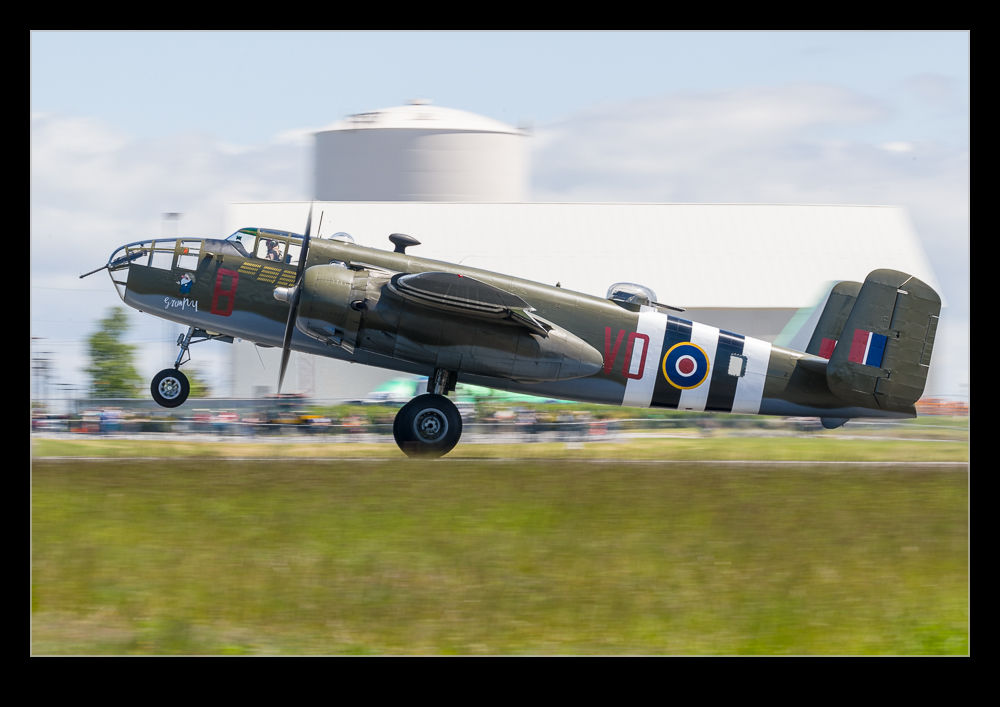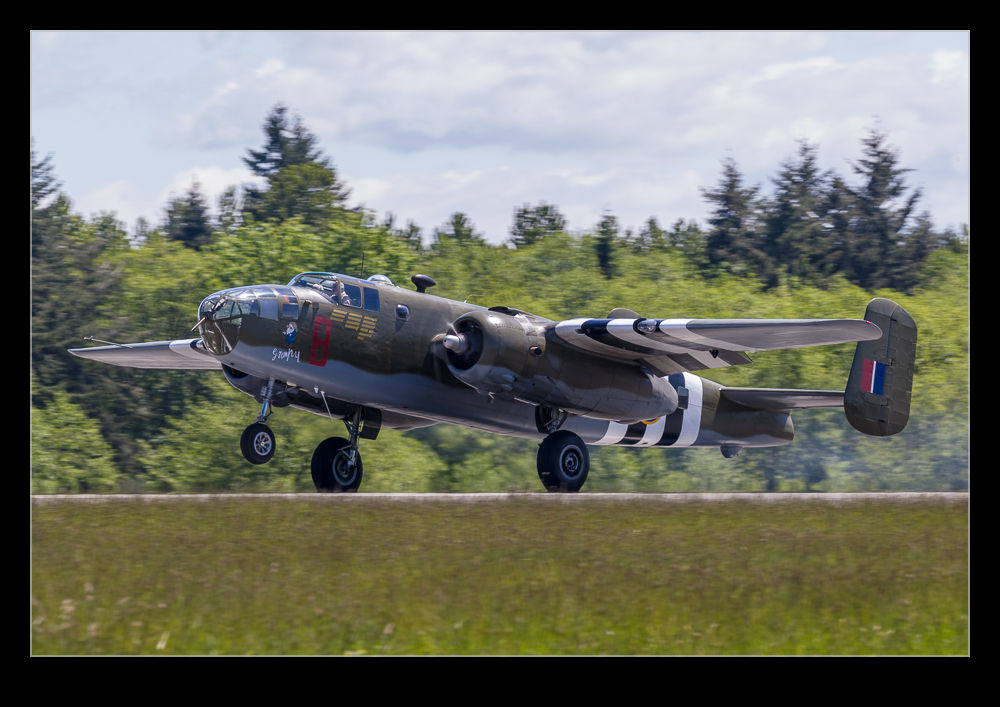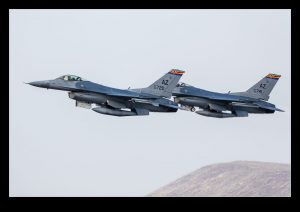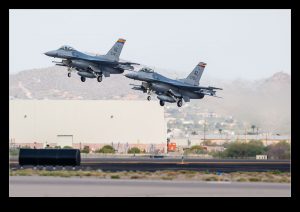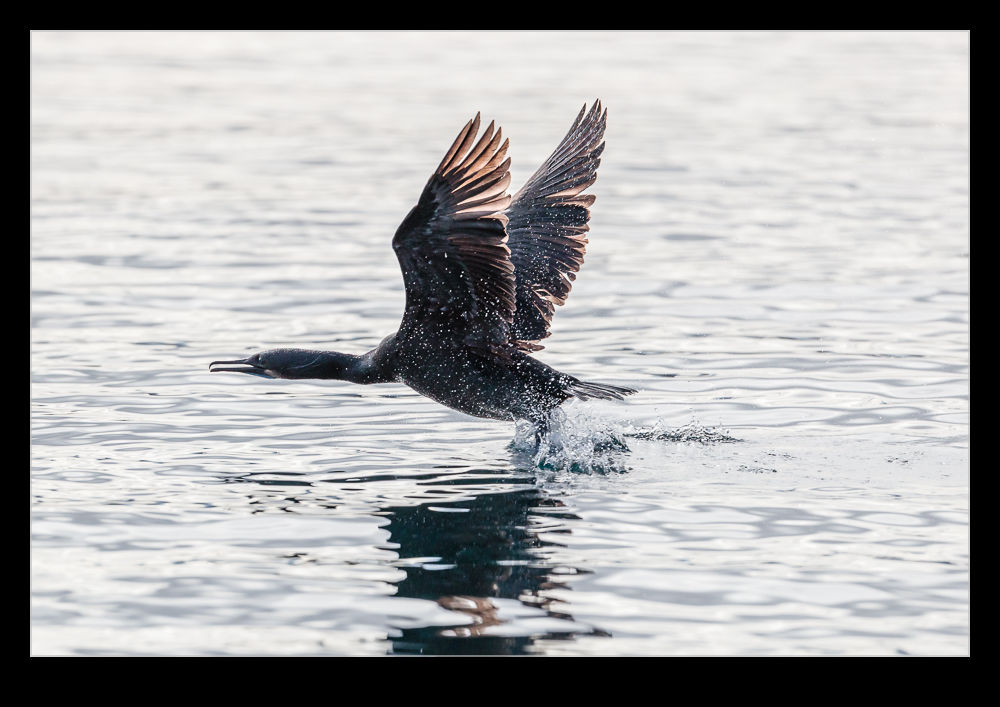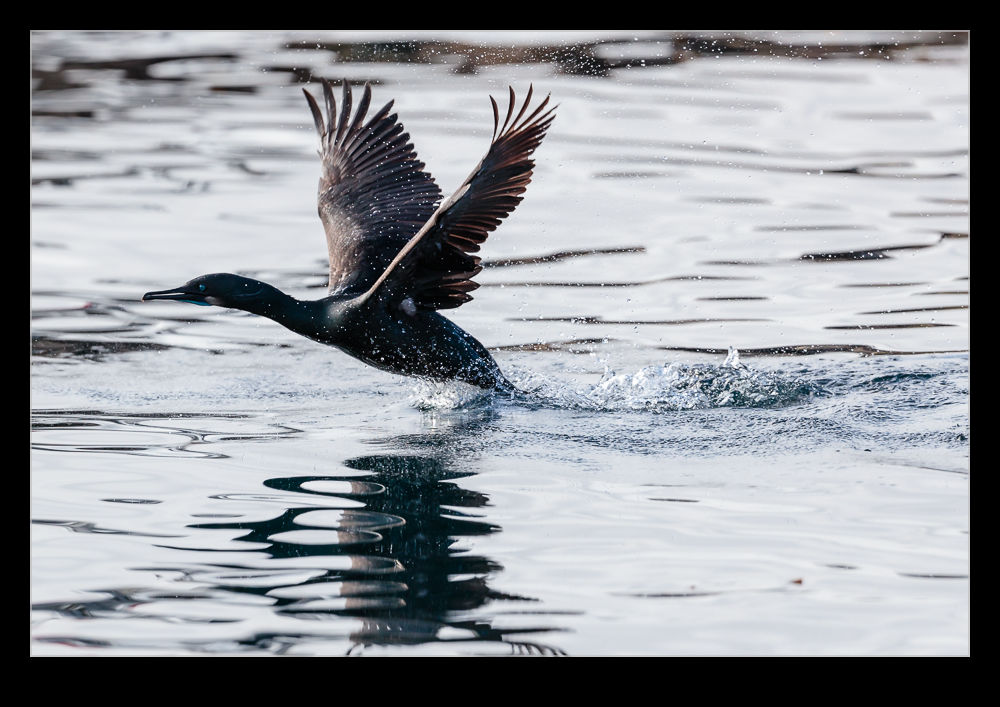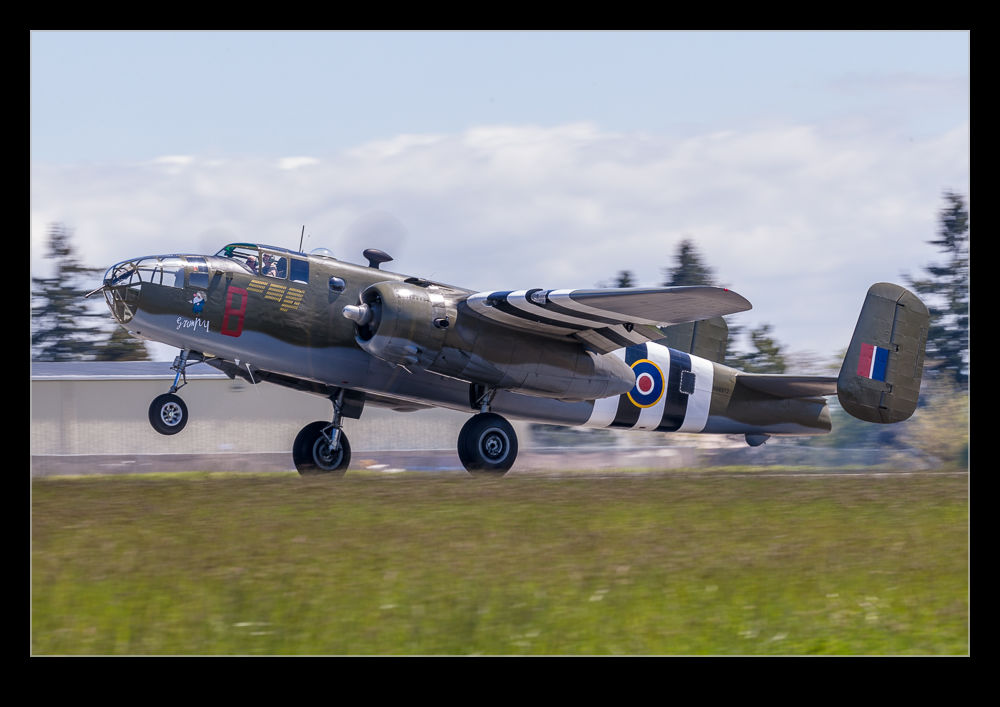 Paine Field held an open day which included some flying from the local aircraft. The Heritage Flight Museum had a number of the aircraft taking part including their B-25, Grumpy. On one of the takeoffs, they used a technique that was reminiscent of the Doolittle Raid. They applied power and full back controls to lift the nosewheel from the ground and roll down the runway in a wheelie. It was quite an interesting thing to see.
Paine Field held an open day which included some flying from the local aircraft. The Heritage Flight Museum had a number of the aircraft taking part including their B-25, Grumpy. On one of the takeoffs, they used a technique that was reminiscent of the Doolittle Raid. They applied power and full back controls to lift the nosewheel from the ground and roll down the runway in a wheelie. It was quite an interesting thing to see.
Tag Archives: takeoff
Section Training
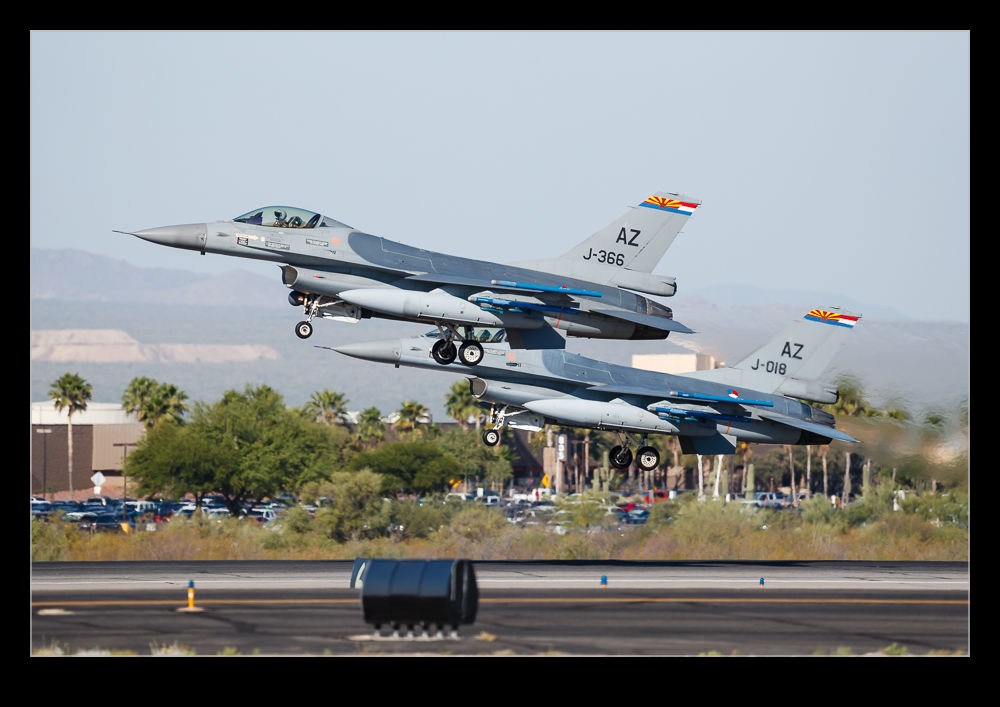 In my previous visits to Tucson International, I have never seen jets taking off or landing as pairs. It has always been single jets. This time I had a couple of times when section takeoffs were carried out. There also appeared to be some arrivals in pairs too. Nothing too dramatic but a bit of a change from what I have seen there before.
In my previous visits to Tucson International, I have never seen jets taking off or landing as pairs. It has always been single jets. This time I had a couple of times when section takeoffs were carried out. There also appeared to be some arrivals in pairs too. Nothing too dramatic but a bit of a change from what I have seen there before.
Cormorant Takeoff Run
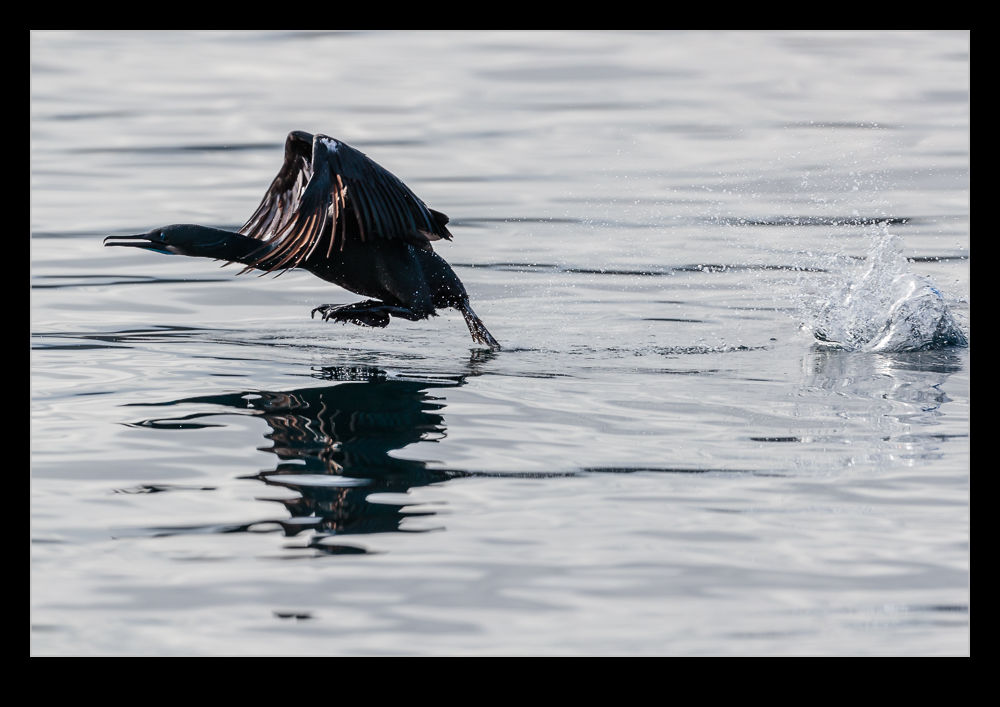 My like for the cormorant is no secret if you read this blog. I think they are a cool bird with a prehistoric look to them. One thing I enjoy when seeing them is watching the way they take off from the water’s surface. They run across the water getting some speed up as they flap. I have wanted to get good shots of this for ages but they usually do it a fair distance from the shore. When they onshore, they launch from whatever they are on. Fortunately, when out whale watching, we got a cormorant that was very close to the boat before it decided to take off. I happened to be looking the right way at the time and got something close to what I had been after. It was backlit but still close. I’ll still be hoping for something better but this was a good result for me.
My like for the cormorant is no secret if you read this blog. I think they are a cool bird with a prehistoric look to them. One thing I enjoy when seeing them is watching the way they take off from the water’s surface. They run across the water getting some speed up as they flap. I have wanted to get good shots of this for ages but they usually do it a fair distance from the shore. When they onshore, they launch from whatever they are on. Fortunately, when out whale watching, we got a cormorant that was very close to the boat before it decided to take off. I happened to be looking the right way at the time and got something close to what I had been after. It was backlit but still close. I’ll still be hoping for something better but this was a good result for me.
747 Formation Takeoff – Well, Nearly
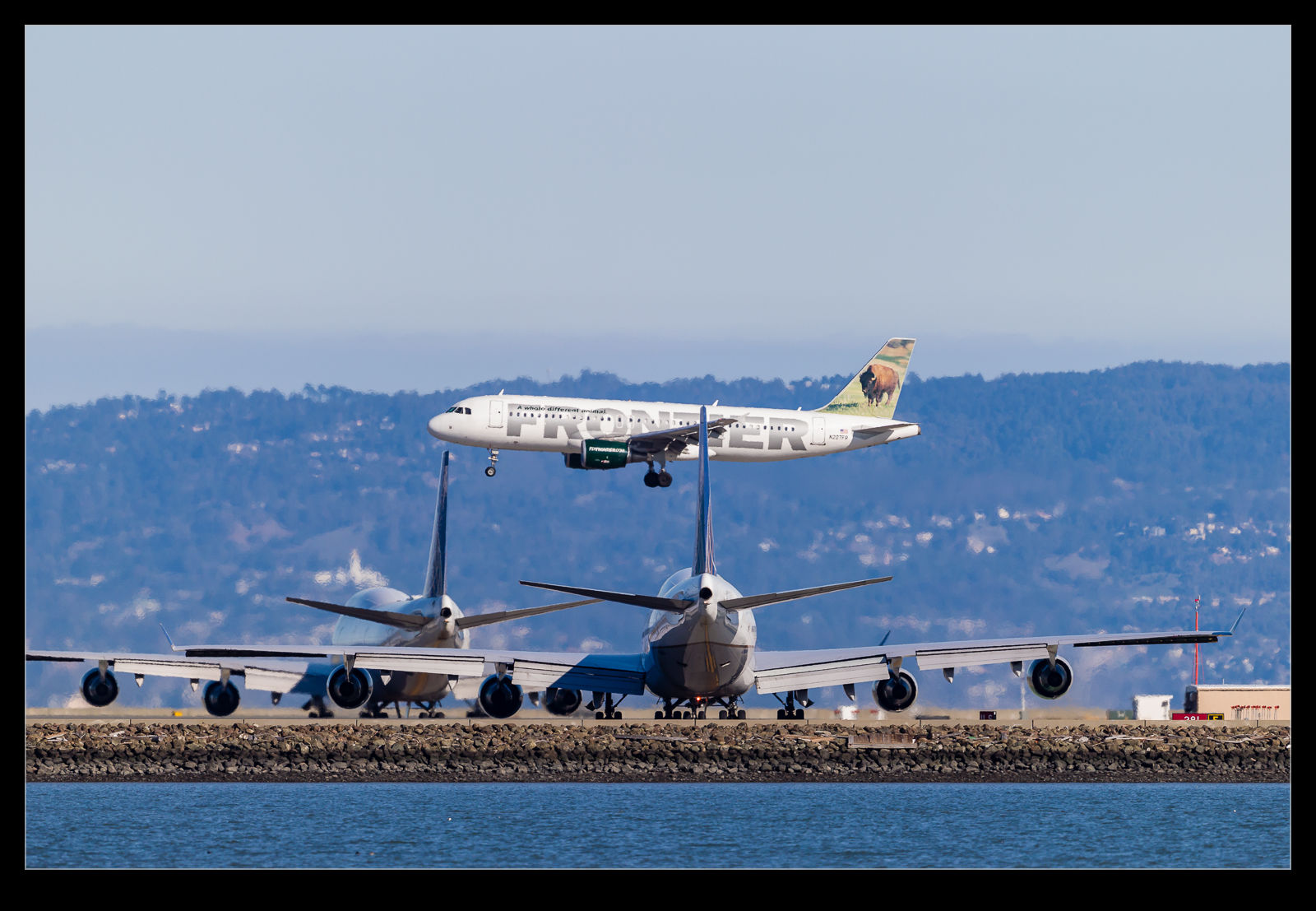 While the world’s 747 fleet is progressively running down, United is still a big operator of the type and SFO is a focus of their operations of the type. Consequently, during the surge of departures to Asia in late morning, you will have a pretty steady stream of Jumbos taxiing out and taking off. While Roger and I were out, a couple of them taxied out at the same time. We had one holding short of 28L and the other was in the gap between 28L and 28R as incoming aircraft approached. I joked with Roger that the two of them should line up on parallel runways and depart in formation.
While the world’s 747 fleet is progressively running down, United is still a big operator of the type and SFO is a focus of their operations of the type. Consequently, during the surge of departures to Asia in late morning, you will have a pretty steady stream of Jumbos taxiing out and taking off. While Roger and I were out, a couple of them taxied out at the same time. We had one holding short of 28L and the other was in the gap between 28L and 28R as incoming aircraft approached. I joked with Roger that the two of them should line up on parallel runways and depart in formation.
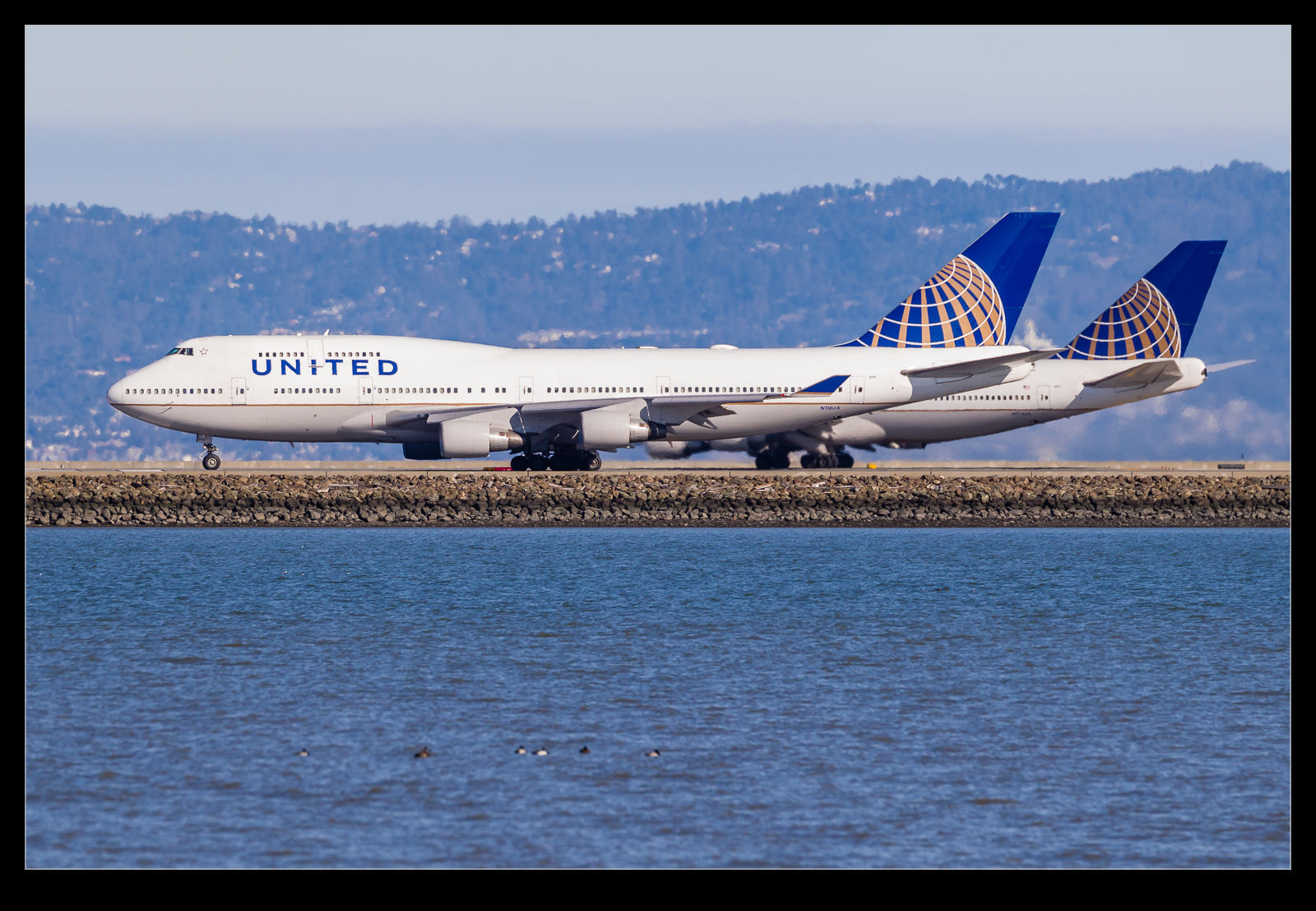 When the inbound jets had landed, both aircraft moved forward again and, sure enough, they lined up on both runways. We couldn’t help but laugh at this since they seemed to be following our instructions. You will regularly see parallel departures on the 01 runways but we couldn’t believe that we would have the same thing here. Sadly, we were right. The closer jet departed first and was then followed a short while later by the second. It would have been very cool to see them climb out side by side but that was a bit too much to ask.
When the inbound jets had landed, both aircraft moved forward again and, sure enough, they lined up on both runways. We couldn’t help but laugh at this since they seemed to be following our instructions. You will regularly see parallel departures on the 01 runways but we couldn’t believe that we would have the same thing here. Sadly, we were right. The closer jet departed first and was then followed a short while later by the second. It would have been very cool to see them climb out side by side but that was a bit too much to ask.
Boeing 777-300ER Main Gear
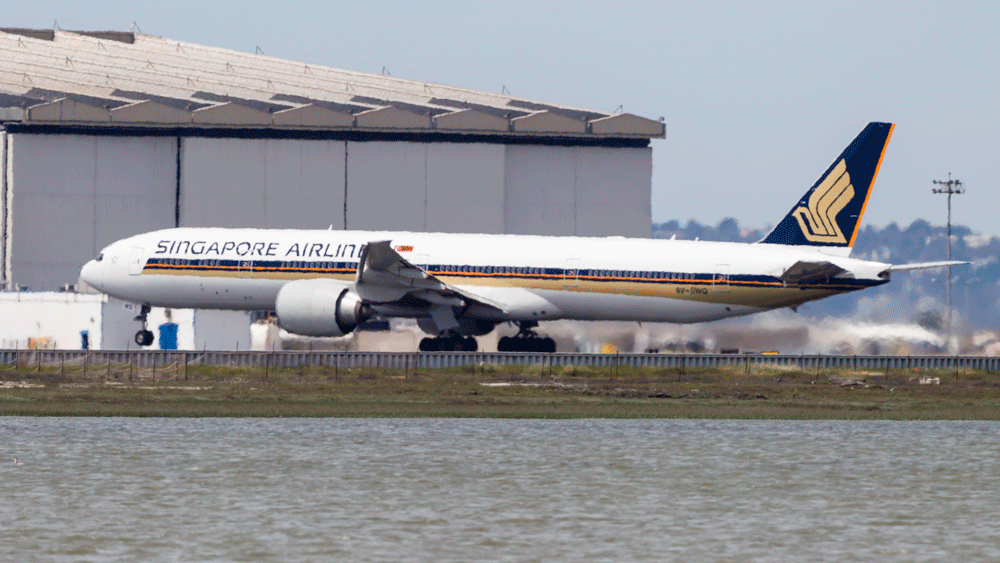 When Boeing launched the 777-300ER, they took the stretched fuselage of the 777-300, a model that didn’t sell particularly well and married it to the updated wing that made use of the fuel capacity of the outboard portion of the wing that had been left when the original concept of a folding wing was contemplated. The increased the weights of the jet, added far more powerful engines and, with the increased fuel capacity, came up with a winning formula that has done a very effective job of killing off the 747.
When Boeing launched the 777-300ER, they took the stretched fuselage of the 777-300, a model that didn’t sell particularly well and married it to the updated wing that made use of the fuel capacity of the outboard portion of the wing that had been left when the original concept of a folding wing was contemplated. The increased the weights of the jet, added far more powerful engines and, with the increased fuel capacity, came up with a winning formula that has done a very effective job of killing off the 747.
One problem that they had to deal with during development was runway length requirements for takeoff. Even with the bigger engines, the long fuselage limited rotation angles at takeoff and meant a higher takeoff speed was required which meant a longer runway requirement. Boeing came up with an interesting solution (after dumping some slightly more curious ideas). The main gear on the 777 has a triple axle bogie. Previously this had rotated about the pin attaching it to the main gear leg. Boeing’s solution was to lock the bogie level during takeoff.
The result of this is to have the rotation of the jet at takeoff to take place around the rear wheels of the bogie rather than the gear leg pin. The slight aft movement of the rotation point allows the aircraft to rotate slightly more nose up and gain a greater angle of attack. This gives slightly more lift for a given speed. This means an earlier takeoff and a shorter runway requirement.
I have tried many times to witness this at work. First, it happens pretty quickly. Second, I am often in a poor position to see the rotation point. Recently I was at SFO to pick up some people. I was getting a few shots prior to their flight arriving and a Singapore 777-300ER was taking off. The rotation point is quite far away (although, if you are in the terminal, you might have a good view) and the heat haze is a problem. However, I decided to get a sequence of shots anyway. Now, how to use them.
Heat haze is crappy on stills but less of an issue with moving images so I decided to animate the sequence. I imported all of the shots into Photoshop as layers in a single document via Lightroom. The hardest part was aligning them. I started at the bottom layer and then progressively made each layer above visible. I then changed the latest top layer blend mode to difference. This makes aligning them a lot easier since everything is black unless it is different. I was focused on the gear so used that as the reference as the fuselage rotated. Once each layer was in place, I changed the blend mode back to normal and moved to the next layer up.
Once they were all aligned, I used the animation timeline to make frames from each layer (and reversed the order since every time I do this they seem to be the wrong way around). Then I could crop in to get the overall view I was after and save the file. A Save for Web allows the generation of the animated GIF and we are done. The image at the top is the final result. It does allow you to see a bit of what is going on if you look closely although it is still a bit hard given the distance, the angle to the ground and the heat haze. I guess I will have to find a location closer next time.
